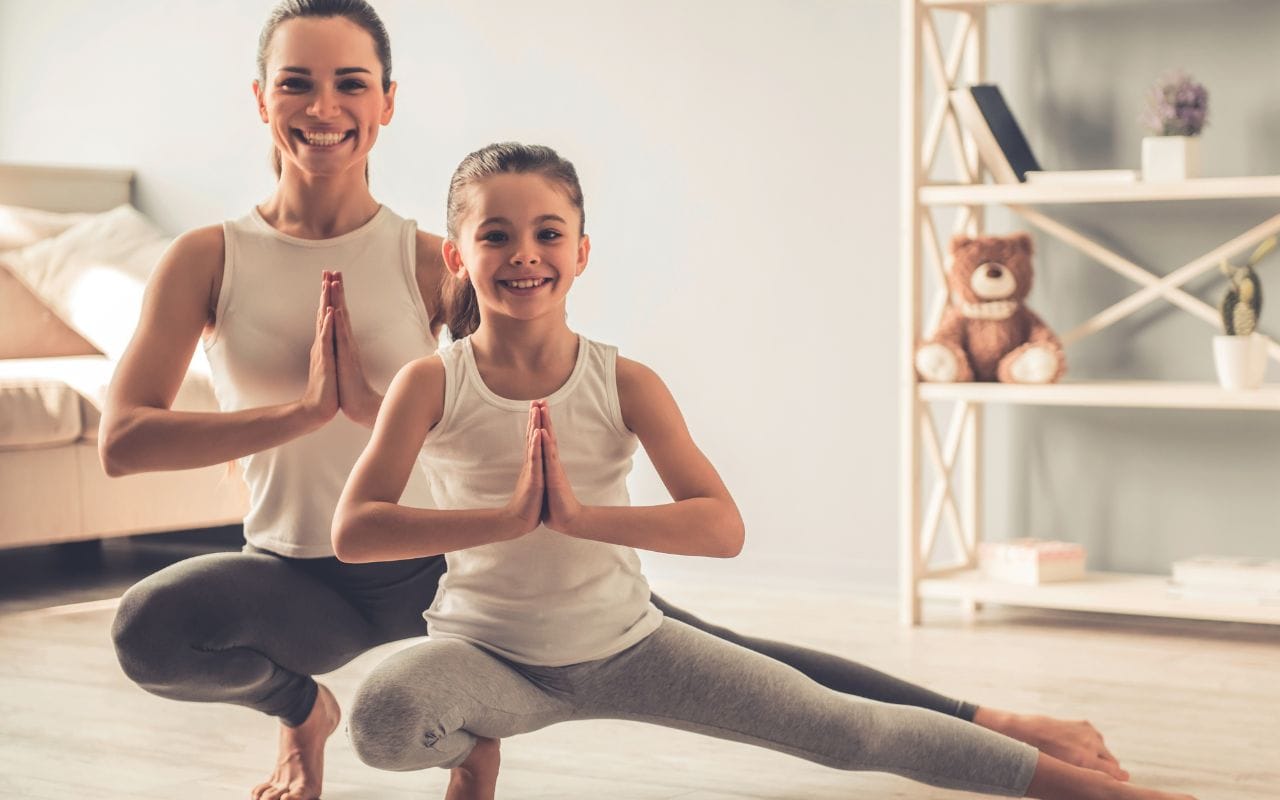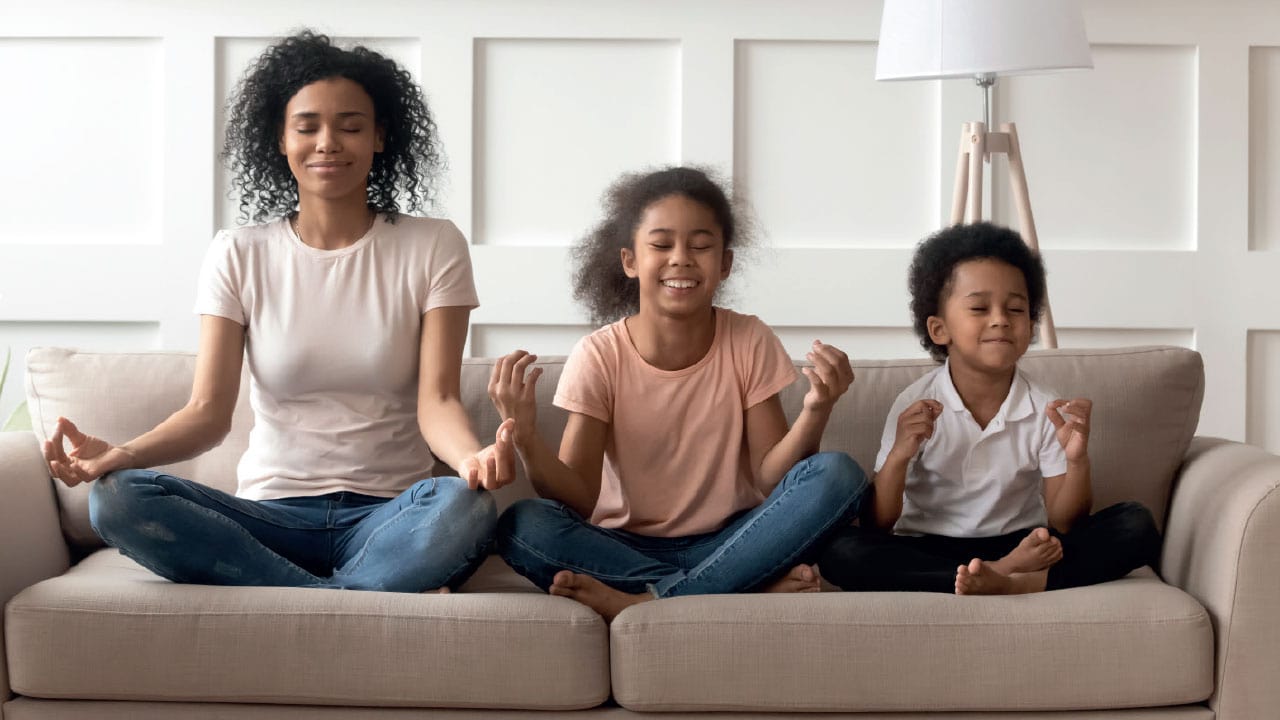
Play yoga like a child
What can we learn from children when they practice yoga? By Victoria Tso
Do you practice yoga with your family? Or with other children in your life? We can learn so much from practicing with children as they aren’t restricted by the ‘rules’ we tend to follow in our own practice and simply ‘play’ yoga. They love to shake and bounce, to make new shapes with their bodies, and create exciting partner and group poses. They also enjoy playing with their breath and really feeling into their bodies to notice how they respond. They tune in to their senses during yoga, noticing what they can feel, hear and even smell during practice. They are even playful during their relaxation, with visualisations or tuning in to the soundscape around them.
Are you ever just playful in your practice? I’d recommend giving it a try, you might be surprised how good it makes you feel!
Does your self-practice often follow the same pattern? There is, without doubt, something comforting in allowing your muscle memory to take over as you flow between poses, but try channelling your inner child and feel what each part of your body needs next. My training was in classical Hatha yoga so my practice tends to begin with sun salutations, standing poses and then moves closer to the ground. When I work with children, however, we mix up our poses much more often. We play games or just do the poses which feel best for our bodies in the moment. If we feel a bit tired after a challenging pose, we enjoy a lion or woodchopper breath to get our energy up — there’s no need to always save pranayama for the end of practice!
Of course, the easiest way to take inspiration from a child is to practice with one. I have the privilege of teaching children yoga every day so here are five lessons I have learned from the children I teach:
1. Chanting, singing and humming are really good fun...and it's actually fine to talk during yoga
These are often elements which get dropped from our regular yoga practice but they are incredibly powerful. Children love to chant, to sing, or to simply hum out their breath and when we join them we can reap those benefits too. Make an effort to include some chanting the next time you meet your mat and feel your throat chakra respond. Children also talk during practice, something very rarely done in adult yoga. There is good reason for this; we are usually turning our focus inwards during practice. But sometimes it’s also good to verbalise what we are feeling or how a pose is affecting us.
2. You can hold a pose for as long, or as little, as you want
So many of us are in the habit of holding poses for a certain number of breaths, but children just get into poses and stay for as little or as long as they want to. My four year old will sit in butterfly for ages and loves to lay in child’s pose before bed. If he tries boat pose he will only find stillness for a moment before happily moving on without judgement.

3. Yoga isn't about 'wrong' or 'right', and what your body looks like doesn't matter
I think we all know this one but children really take this seriously. I love watching them work in pairs to support each other’s poses and use language like “does it feel better to put your foot further back” rather than telling them their pose is wrong. They make up poses and just enjoy them for how they feel rather than critiquing whether they are ‘real poses’ and which lineage they come from. They also don’t feel any need to take photos in their most impressive poses, and don’t like poses because of how they look, but how they feel. If I ask a group of children to show me their favourite yoga poses they’re much more likely to move into child’s pose than dancer.
4. If you don't like a pose, you don't have to do it
How many of us put an extra effort on the poses we least like? There is a reason for this: sometimes we are resistant to the poses we need most and certainly poses become easier with practice. Equally though, it’s sometimes delicious to just move through our favourite poses; to give ourselves permission to say ‘I don’t want to do those ones today’. Children are quick to tell me “this doesn’t feel good for me today” and I find their intuition and assertiveness inspiring.
5. Props are fun and it's great to use as many as possible
I have been in plenty of adult yoga classes when the teacher offers the use of a block with an adaptation of the pose and yet nobody takes them up on the offer — even if they’re struggling. Offer children a prop and they can’t wait to get their hands on it. Blocks, steps, singing bowls and breath balls make appearances in all my children’s yoga sessions and I really recommend you try using them more often in your practice. I also watch children getting creative with how they use them. They make balance beams from yoga blocks or feel the vibrations of the singing bowl on different parts of their bodies. There are some amazing props about so trying a new one is a great way to mix things up and make your practice more playful.
So what conclusions can we draw from all this? The sequences of our practice are deeply rooted in traditions and ancient knowledge which I certainly don’t question. However, once in a while, just ‘playing’ at yoga and not taking it too seriously will be good for us all.
Victoria Tso is a specialist children’s yoga teacher and experienced classroom teacher. She creates resources for parents and teachers to help them share yoga safely with the children in their life. Enjoyed this little infusion of yoga? Find a free bedtime yoga series for kids on her website: innerchildyogaschool.com or connect on Instagram @inner_child_yoga_school


